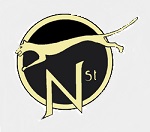Forces of Valor FOV801007A German Sd. Kfz. 173 Jagdpanther Ausf. G1 Heavy Tank Destroyer with Zimmerit - "Black 234", schwere Panzerjager Abteilung 654, Normandy, August 1944 [Bonus Maybach HL230 P30 Engine] (1:32 Scale)
"We must do everything we can to promote anti-tank defense, and work just as hard to guarantee successful counter-attacks through the instrument of powerful tank forces of our own."
- Major-General Heinz Guderian, "Achtung Panzer!"
 In the fall of 1942, the German Waffenamt issued an order to develop a heavy assault gun to combat the growing menace posed by Russian armored forces all along the eastern front. What resulted was the Sd. Kfz. 173 Jagdpanther tank destroyer, arguably the best long-range tank destroyer of the war. The Jagdpanther mounted a powerful 8.8cm Pak L/71 cannon within a fixed turret, which was situated atop a standard Panther V chassis. Although production of the tank was begun at MIAG in January 1944, it took another ten months before the larger NMH plant could expand the production run in time for the "Wacht am Rhein" counteroffensive. By war's end only 392 vehicles had entered service with the Wehrmacht, but these had a telling effect on the prosecution of the war.
In the fall of 1942, the German Waffenamt issued an order to develop a heavy assault gun to combat the growing menace posed by Russian armored forces all along the eastern front. What resulted was the Sd. Kfz. 173 Jagdpanther tank destroyer, arguably the best long-range tank destroyer of the war. The Jagdpanther mounted a powerful 8.8cm Pak L/71 cannon within a fixed turret, which was situated atop a standard Panther V chassis. Although production of the tank was begun at MIAG in January 1944, it took another ten months before the larger NMH plant could expand the production run in time for the "Wacht am Rhein" counteroffensive. By war's end only 392 vehicles had entered service with the Wehrmacht, but these had a telling effect on the prosecution of the war.
There were two main variants of the Jagdpanther. The earlier G1 1944 model had a small welded main gun mantlet, one-piece Pak 43/3 gun, a modified Panther A engine deck, and two vision openings for the driver. The G2 Jagdpanther used a Panther Ausf. G engine deck, a larger gun mantlet bolted externally, and a two-piece KwK 43/4 L/71 gun. Some later G1 models had 'hybrid' G2 features such as the larger G2 mantlet as changes to the design were implemented. Zimmerit was applied to G1s up to September 1944, then was withdrawn to decrease production time. Early Jagdpanthers had two vision openings for the driver, whereas late versions had only one. The main gun originally had a monobloc gun barrel, but, from May 1944 onwards, it was gradually replaced with an economical two-part barrel after crews determined barrel wear was uneven.
This particular 1:32 scale replica of a German Sd. Kfz. 173 Jagdpanther Ausf. G1 heavy tank destroyer with zimmerit anti-magnetic mine coating was attached to schwere Panzerjager-Abteilung 654 and deployed to Normandy in 1944.
Sold Out!
Dimensions:
Length: 10-1/2-inches
Width: 3-1/2-inches
Release Date: February 2020
 Historical Account: "Heavyweight Class" - Schwere Panzerjager-Abteilung 654 was formed in September 1943 from Panzerjager-Abteilung 654 and was equipped with Ferdinand tank destroyers. In June, it was transferred to the Eastern Front where it remained until the end of the year as II./Panzerjager-Regiment 656.
Historical Account: "Heavyweight Class" - Schwere Panzerjager-Abteilung 654 was formed in September 1943 from Panzerjager-Abteilung 654 and was equipped with Ferdinand tank destroyers. In June, it was transferred to the Eastern Front where it remained until the end of the year as II./Panzerjager-Regiment 656.
In 1944, it became the first unit to be re-equipped with Jagdpanthers (it would be the only unit equipped only with that type of tank destroyer), the first two vehicles arrived at the Panzerjager school in Mielau in late March but training had also to be done using Bergepanthers due to the lack of vehicles. On June 15th, it had still only received eight Jagdpanthers but the usable elements of the unit was loaded onto trains and sent to Normandy with more elements arriving as the Jagdpanthers became available. It was attached to the Panzer-Lehr-Division beyween June 27th-29th and then to XXXXVII Panzer-Korps. On July 1st, they had 25 Jagdpanthers ready for action and on July 28th they had 21 with four being repaired. Later in July it was attached to LXXIV Armeekorps. On August 1st, they had only eight Jagdpanthers ready for action with 16 under repair and 16 additional Jagdpanthers were sent to the unit to bring it up to strength. On September 9th, 1944, it was ordered to withdraw to the Grafenwohr camp to be rebuilt up to the official strength of 45 Jagdpanthers.
By November, the unit was back in action on the western front, this time with LXIII Armeekorps. On December 1st, the unit reported 25 Jagdpanthers ready for action.





 Jagdpanther
Jagdpanther 









